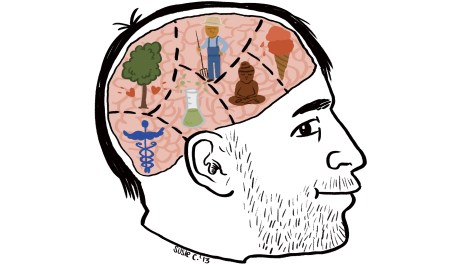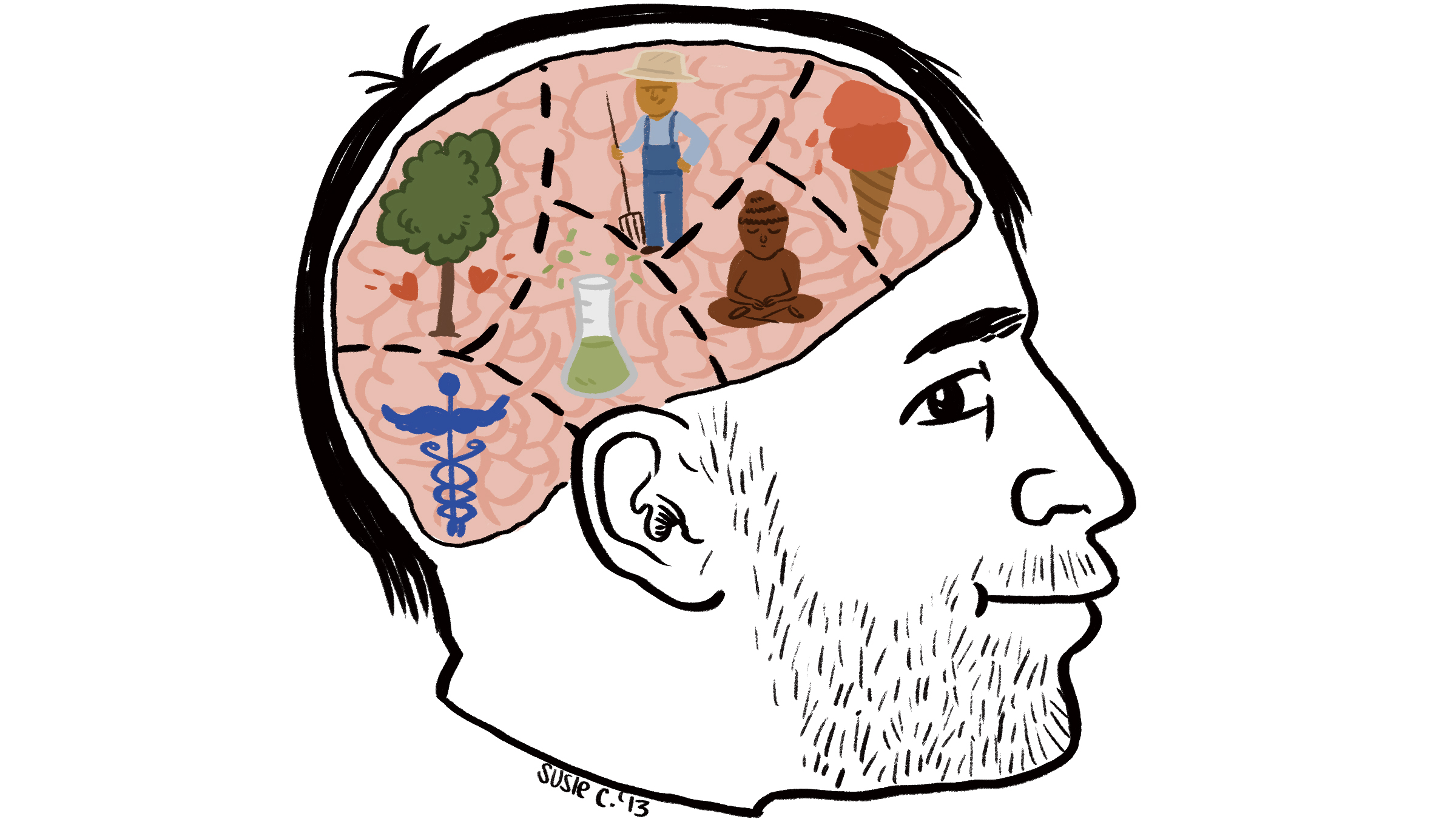
Susie Cagle Nate’s brain.
It used to be that journalists wrote from behind a curtain. We went out and gathered our facts, cobbled them together in stories, and published — all as anonymously as possible (aside from the byline). We weren’t supposed to write personal essays about the issues we covered or give money to politicians, because it would expose our biases. Journalists were afraid that people wouldn’t trust the news if they knew there were flawed and opinionated people writing the stories. I think readers can judge for themselves. And I’m up for working without that curtain.
So, as Grist’s new food writer, here’s where I’m coming from: I was born into the cult of organic. My parents were Berkeley hippies who moved to the little bohemian town of Nevada City, Calif., when I was a toddler, to get back to the land. That childhood left me with a preference for nature and a suspicion of technology. But growing up in Nevada City also gave me a front row seat from which to observe how faith in nature could spin into fuzzy thinking and paranoia. By the time I was 18, I was already fed up with people giving bogus nutritional advice or lectures on chemtrails. I loved science because it could separate plausible and crazy. I fell in love with journalism for the same reasons. I got a job as a reporter in Burley, Idaho, mostly covering agriculture.
It was there that I began to consider food a subject of serious contemplation. Burley lies within the Magic Valley, and the magic there was the technological transformation of parched sagebrush flats into some of the most productive industrial farmland in the world. There were sugar beets rolling off of every third truck in the winter, miles of potatoes blooming prettily in the summer, and all year round the stink of massive dairies (the scent of dairy-air, as one colleague put it). And yet, amid this bounty, I found myself desperately lonesome for food. There were plenty of calories; what was missing were the unquantifiables that I was used to getting with food: a sense of renewed vitality, conviviality, delight.
I wanted food to be exciting and occasionally transcendent; eating to be an opportunity for cultural exchange across the table; and meals to offer communion with the natural world. But in the Magic Valley, food was about efficiency and the hard realities of the commodity market. Ever since then, I’ve been working to reconcile these two contradictory visions. The former (food as joy and beauty) without the latter (food as money) is an out-of-touch elitist reverie. The latter without the former is a post-apocalyptic nightmare: Monoculture in farming — taken to its extreme — yields a dull monoculture in eating, in society, in everything. Hope only exists where joy and pragmatism can be brought into alignment.
This is the problem I tackled in my book, All Natural. Many food controversies tend to boil down to the same debate: One side insists on the necessity of progress through the application and advancement of ever more intrusive forms of technological control. The other extreme wants to chuck it all and go back to Eden.
This looks like a stark choice in the abstract, but in application, things always end up being a mix. I think we need to make every acre produce as much as possible, but that shouldn’t be our only goal. Our food should make the world cleaner and more beautiful rather than uglier and more polluted. Our food should support a broad middle class rather than tycoons and destitute laborers. Our food shouldn’t require the torture of animals. Our food should make us healthier.
Mainstream agriculture fails to deliver on any of these counts. The question is, can we come up with something that does any better?
All right, that’s my manifesto. Consider yourself warned. A couple of final notes: First — though I think it’s a mistake to hide behind a curtain — there’s one part of the old-school journalist model that I admire, and still adhere to: the commitment to follow the facts, even (or especially) when they contradict my assumptions.
Now, following those contradictory facts sometimes leads to revisions and amendments, which brings me to the second note: Whatever I’m saying here? All that could change. After two years in Burley, I discovered this guy named Michael Pollan, who was speaking to the heart of the big issues that I’d been reporting around the edges, and I went off to study with him. Perhaps the most important thing I learned from Pollan’s example was the power of accepting the evidence when it shows you are wrong, and moving forward, stronger.



